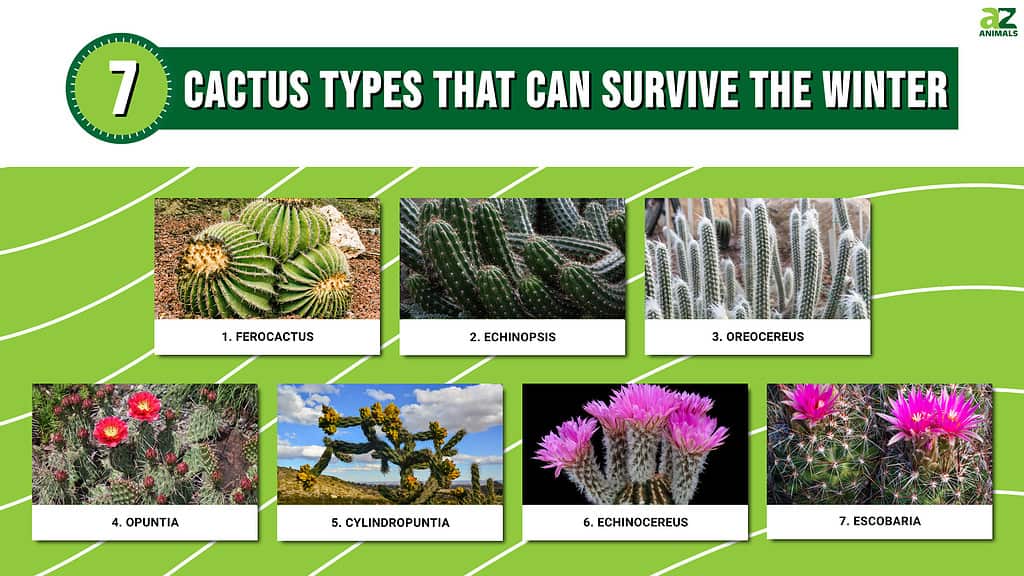
A cactus is a type of succulent plant that stores water in its stem and leaves, allowing it to survive in harsh climates with little or no water. Cacti generally have thick, fleshy stems and spines or thorns on the outside for protection from predators. They are native to hot desert regions such as Arizona, California, Nevada, New Mexico, Texas, and Utah in the United States. There are over 2,000 species of cacti around the world, ranging from small ground-cover plants to large tree-like specimens. Depending on the climate they come from and their care requirements, some types of cacti can actually survive cold winter temperatures without any protection.
In this article, we will explore some types of cacti that can withstand frosty winter temperatures and tips for keeping your cactus healthy during these chilly months!
7 Types of Cold Hardy Cactus Plants
When we think of cactuses, we think of hot, hot deserts. But many deserts get very cold! Some species of cactus have developed the ability to withstand cold temperatures. Here are a few of our favorite cold-hardy cacti.
1. Ferocactus
Ferocactus is a round cactus with long curved spines that can be 2-2.5 inches in length. These plants are native to areas like California, Arizona, southern Nevada, and Mexico and can usually withstand temperatures as low as 24°F. Some species have been known to handle temperatures down to -20°F. However, they will rot if the cacti are not kept dry during winter.
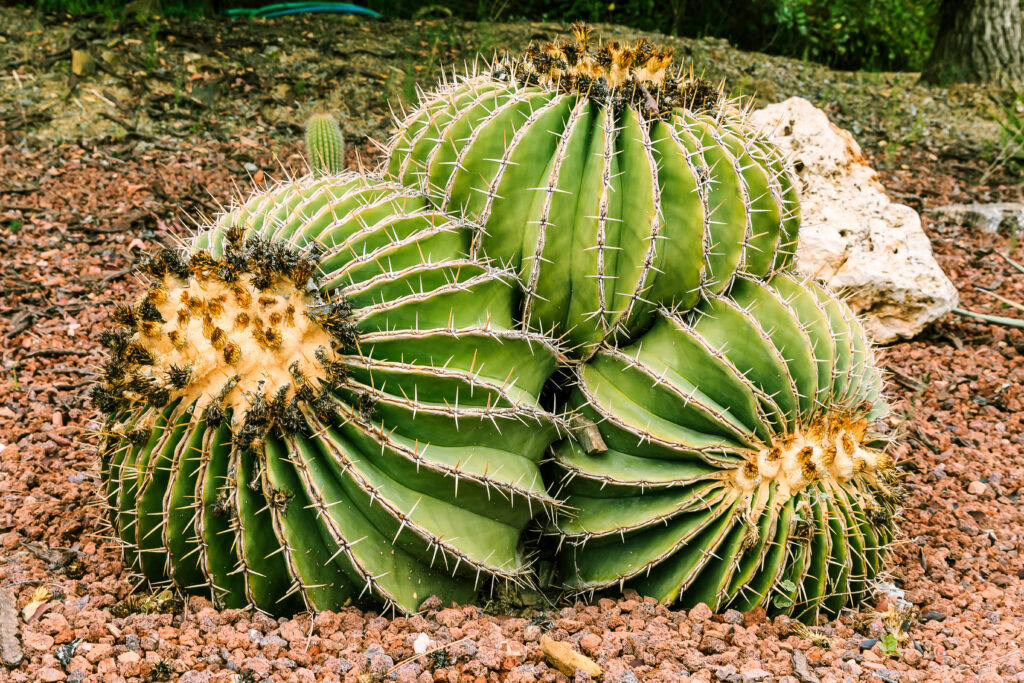
is a round cactus with long curved spines that can be 2-2.5 inches in length.
©Marco Ritzki/Shutterstock.com
2. Echinopsis
Echinopsis cacti come in a variety of shapes, from globular to columnar, and have spines that range in length from half an inch to one inch. Native to South America, these plants can withstand temperatures as low as 17°F, making them ideal for climates with frosty winters. Some species of Echinopsis are even hardy down to 10°F, making them reliable and trustworthy cacti to buy and have around during the winter.
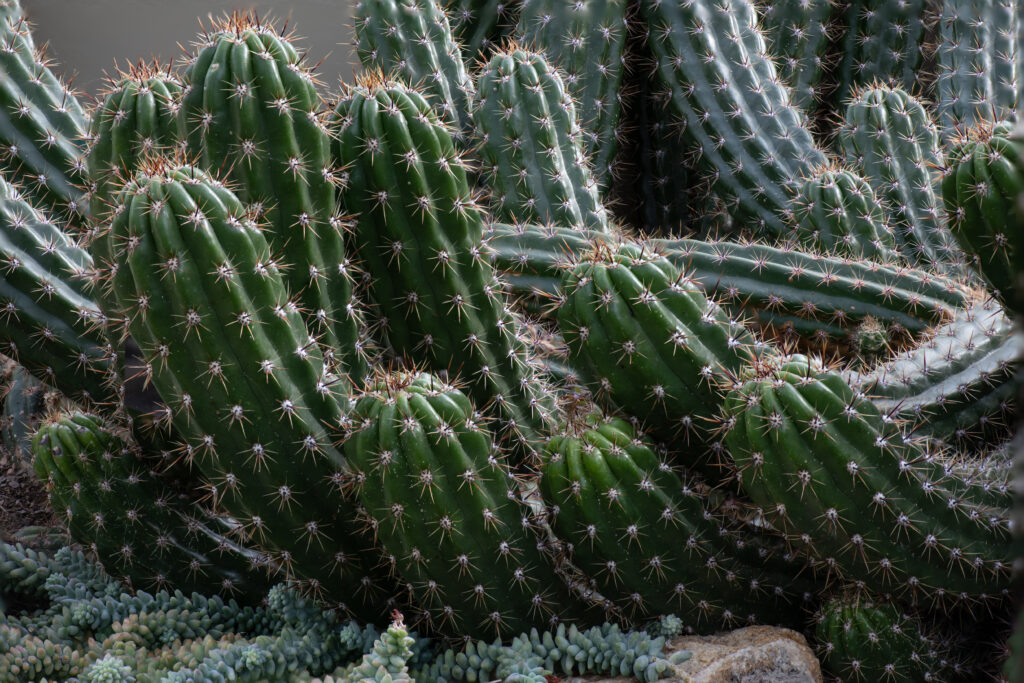
cacti come in a variety of shapes, from globular to columnar, and have spines that range in length from half an inch to one inch.
©Michael Eaton/Shutterstock.com
3. Oreocereus
Oreocereus is one of the tallest cold hardy cactuses. These lovely columnar-shaped cacti reach 9 feet tall outdoors and are hard down to 5°F, but only if they are in a completely arid environment. If you get a lot of winter precipitation, be sure to provide cover, or the roots of this cactus will surely rot.
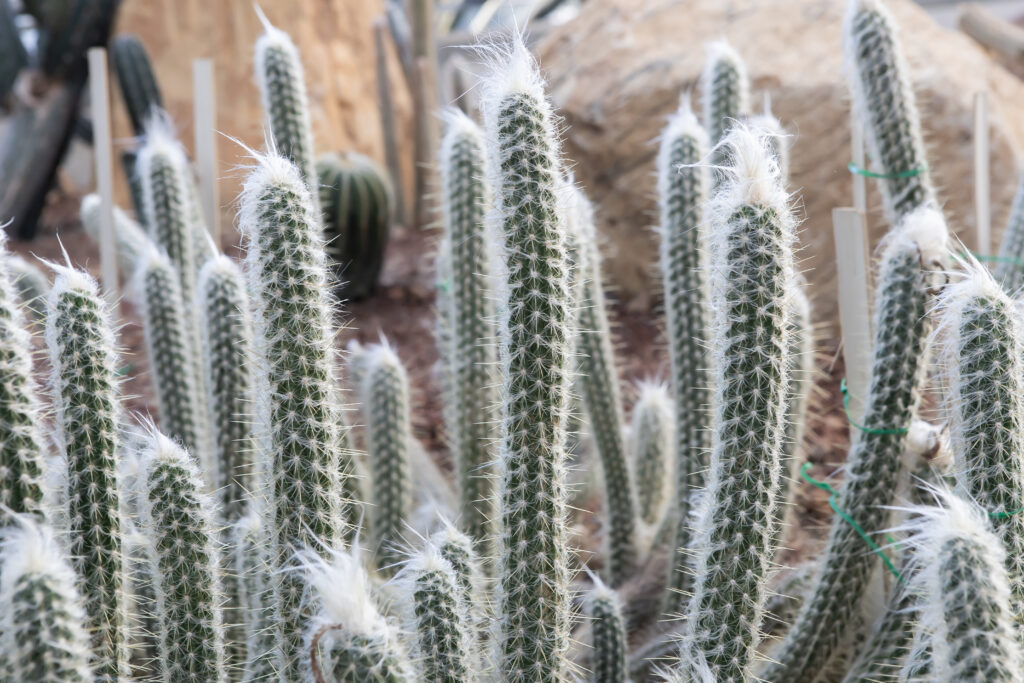
is one of the tallest cold hardy cactuses.
©lot photographer/Shutterstock.com
4. Opuntia
Opuntia cacti are known for their curious flattened stems and small spines that can be irritating. They are one of the only cacti to have leaves, which appear while they are growing. Depending on the species, they can grow to be large trees or stay low to the ground. The fruit of some Opuntia species is referred to as “prickly pear” in Latin America and it is edible. However, when it comes to the cold, Opuntia cacti are not all created equal. Some varieties (Opuntia polyacantha) can endure temperatures as low as -40°F, while others cannot survive past 14°F. This cactus genus has many species distributed throughout North and South America, so their cold tolerance varies greatly.
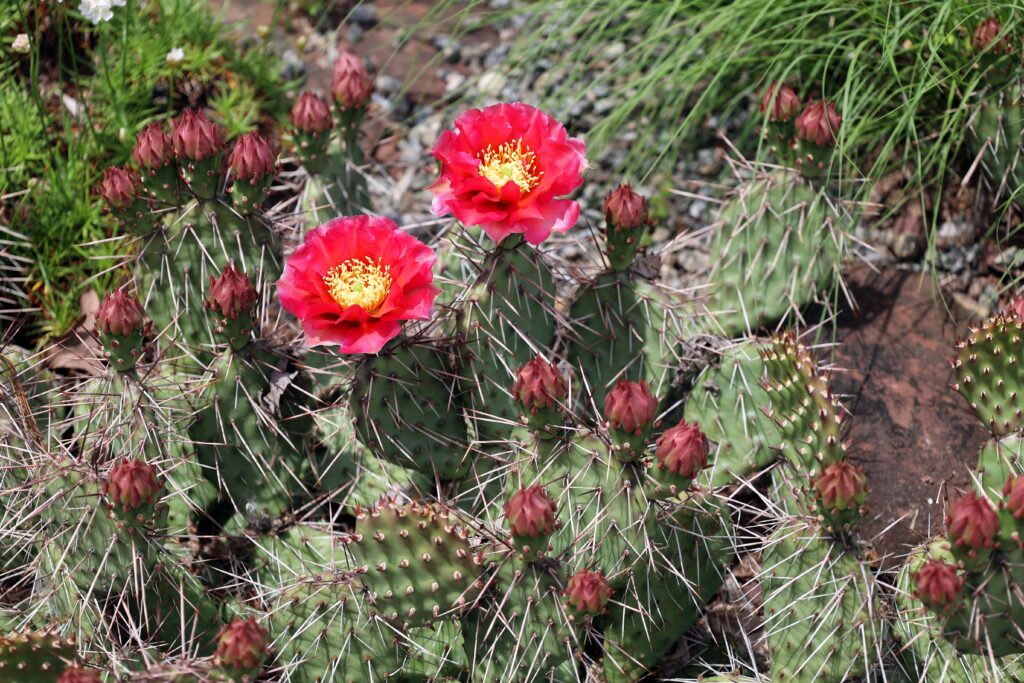
Opuntia polyacantha is a very cold tolerant cactus.
©meunierd/Shutterstock.com
5. Cylindropuntia
This is another super tall cold hardy cactus! Cylindropuntia cacti are characterized by their cylindrical segments and large harpoon-shaped spines. These plants are known for their rapid growth, with some species growing up to 9-13 feet high, while others reach a maximum height of 4 feet. Notably, they are also quite resistant to cold temperatures. Cylindropuntia tunicata can tolerate temperatures as low as -4°F, and Cylindropuntia imbricata can survive down to -18°F. These cacti are native to central North America, all the way to southern Mexico and northern South America.
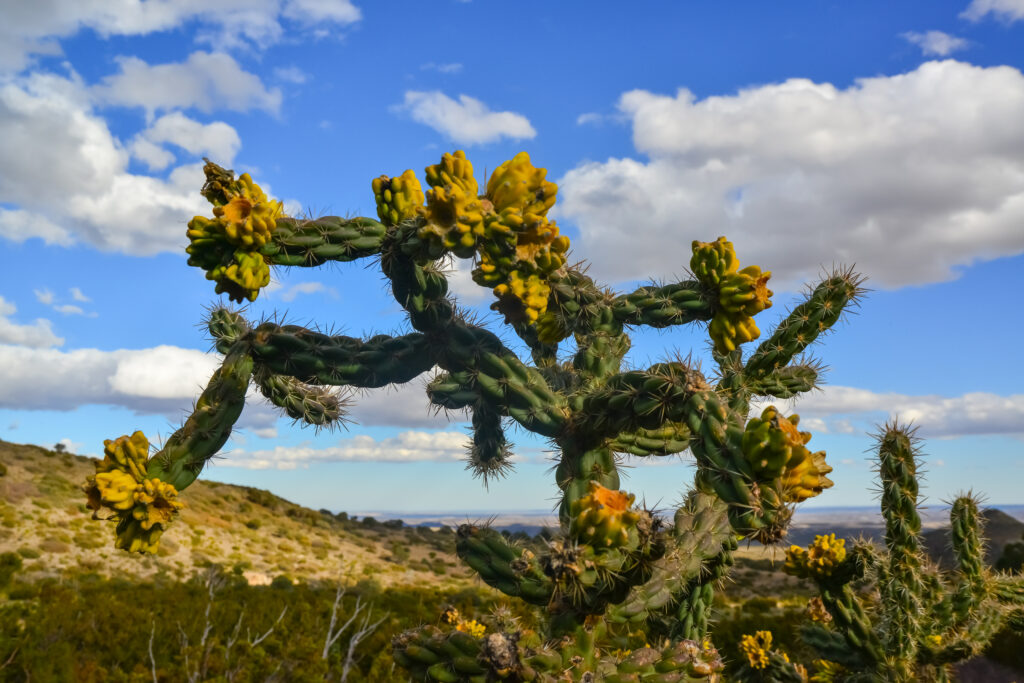
can survive down to -18°F.
©Oleg Kovtun Hydrobio/Shutterstock.com
6. Echinocereus
Echinocereus is a genus of small, eye-catching cacti known for their large, colorful flowers and unique thorn shapes. They are found in the western and central United States and much of Mexico, making them one of the most cold-resistant cacti of this size. The species usually sold commercially are native to Mexico, so they are not as hardy. Nonetheless, if temperatures don’t dip below 23°F, this genus is an ideal choice for winter survival. In fact, Echinocereus reichenbachii can handle temperatures as low as -22°F!
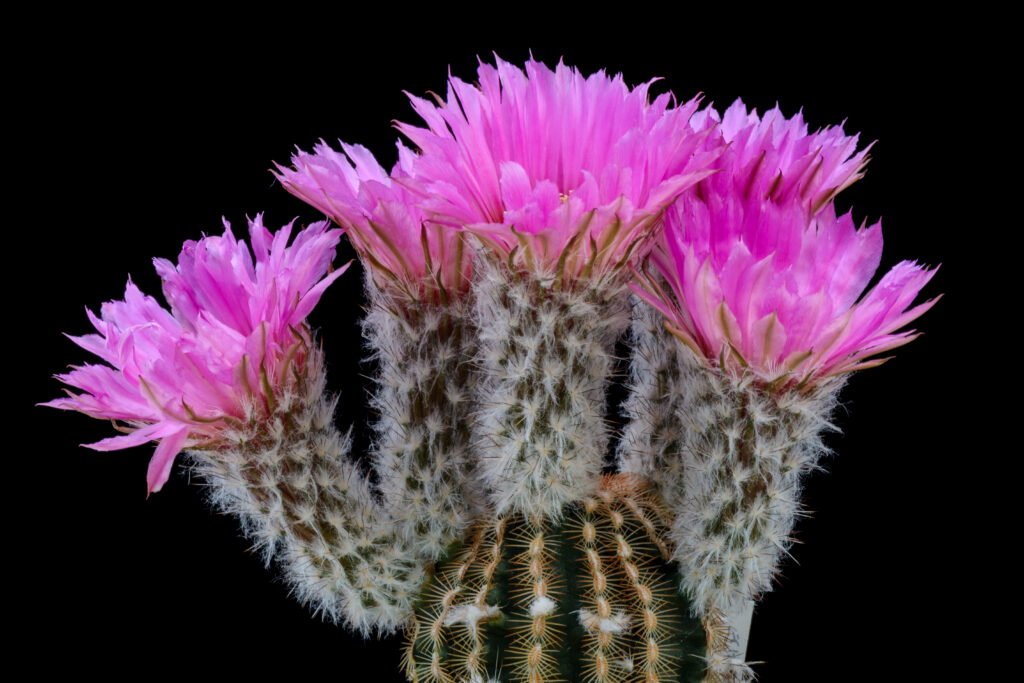
can handle temperatures as low as -22°F!
©Cpifbg13/Shutterstock.com
7. Escobaria
These small cacti live in an area that ranges from Canada to Mexico, crossing through the entirety of the central United States. Due to their northern origin, they are some of the most cold-tolerant types of cacti. They appear similar to Mammillaria but with larger flowers. The stems are often covered in tiny thorns that shield them from snow. Escobaria vivipara can withstand temperatures as low as -49°F, and Escobaria missouriensis can survive temps as low as -31°F. This type of cactus is more common than some others, making them easy to find and purchase.
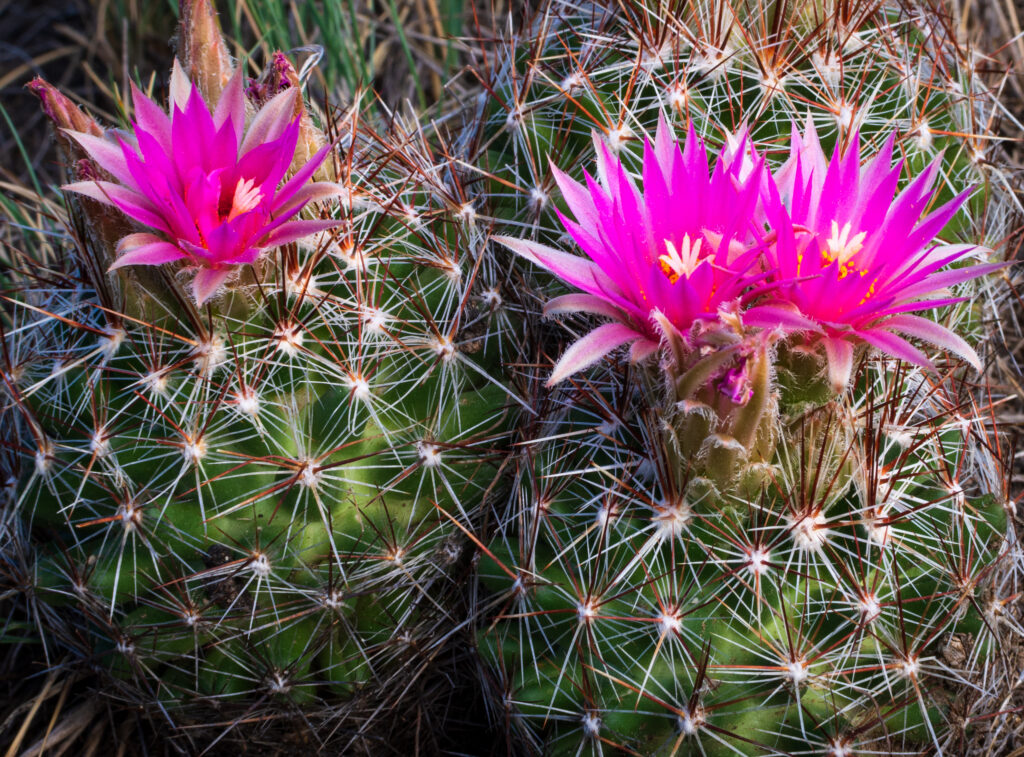
can withstand temperatures as low as -49°F!
©BT Images/Shutterstock.com
How Do Cacti Survive the Cold?
Cacti are well-known for their ability to survive in hot and dry conditions due to their water retention capabilities. However, they take a different approach to stay in cold temperatures. They stop or significantly reduce their water absorption, and many species harden and dry out to prevent excessive water loss. The cold environment also reduces humidity, causing the cactus to create a shell that seals in moisture and protects the interior. This process is like hibernation in mammals, allowing them to survive frigid weather.
How to Keep Your Cactus Dry in Winter
As we have learned, cactuses naturally stop or reduce absorbing water in winter in order to survive the cold weather. This means you should always cease watering your cactus plants during this period of dormancy, as they do not need additional hydration while dormant. But what if you don’t live in a desert and experience rain and snow? How can you protect these sensitive plants from too much precipitation?
An excellent solution for gardeners living in colder climates is creating a protective canopy over the cacti. This could be done by planting them under an existing canopy, such as trees, or building one specifically for wintertime using a tarp and poles. Alternatively, it’s also possible to build a temporary dry ‘hut’ with greenhouse film and posts which will keep your cactus plants dry without letting excess moisture come into contact with them. Many people plant cactus plants in large pots and move them under a covered porch in the winter to stay dry. Whatever method you choose, take steps to ensure your cactus stays dry in the winter, and they will reward you with lush new growth when spring arrives!
Other Winter Cactus Tips
Provide Light – Cacti still need sunlight in the winter. Providing winter cover to keep out water while still letting light in is a tricky combination. A two or three-sided structure with at least one part open to the sun is ideal. In the northern hemisphere, leaving the south side open is best, as this will provide the most light possible to your cactus plant. Another good option is a covered porch with a simple fluorescent grow light.
Don’t feed – Cactus plants are not hungry in the winter. Remember, they are in a sort of suspended animation or plant hibernation during winter. Therefore, feeding them, especially with nitrogen, will cause more harm than good.
Summary of 7 Cactus Types That Can Survive the Winter
| Number | Cold-Hardy Cactus Name | Temperature |
|---|---|---|
| 1 | Ferocactus | -20°F to 24°F |
| 2 | Echinopsis | 10°F to 17°F |
| 3 | Oreocereus | 5°F |
| 4 | Opuntia | -40°F to 14°F |
| 5 | Cylindropuntia | -18°F to -4°F |
| 6 | Echinocereus | -22°F to 23°F |
| 7 | Escobaria | -49°F to -31°F |
The photo featured at the top of this post is © Marina Ivanova/Shutterstock.com
Thank you for reading! Have some feedback for us? Contact the AZ Animals editorial team.






